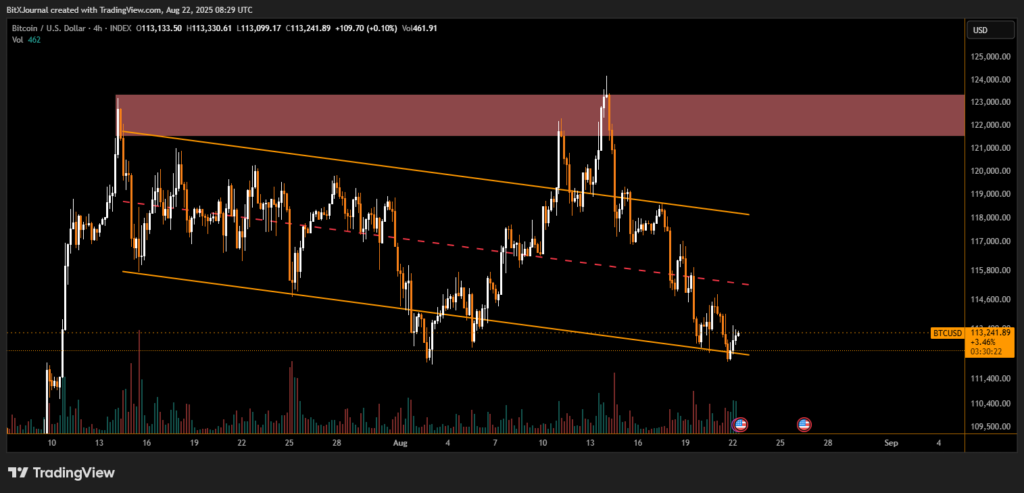Longest Outflow Streak in 4 Months Signals Market Pressure
Spot Bitcoin ETFs have recorded five consecutive days of outflows, totaling approximately $1.17 billion, marking their longest losing streak in over four months, according to data from Farside and CoinMarketCap. This comes after Bitcoin briefly hit an all-time high of $124,128 on Aug. 14, but has since dropped to around $112,870, down nearly 5% over the past 30 days.
Despite the recent downturn, crypto investor Anthony Pompliano believes the market is entering a buying zone. Speaking on CNBC, he stated, “Right now at $112,000 to $113,000, Bitcoin looks pretty oversold.”
Pompliano suggested that Bitcoin’s current price action, combined with historical patterns following the April 2024 halving, could set the stage for a strong recovery in Q4. He noted that investor activity typically increases in September and October, as traders return from summer breaks.

According to CoinGlass, Q3 has historically been Bitcoin’s weakest quarter, delivering an average return of just 6.02%, whereas Q4 tends to be the strongest, with an average gain of 85.42%. Pompliano emphasized that market psychology plays a major role:
“If people believe that the end of Q3 and the start of Q4 is a good time for Bitcoin, they start acting that way.”
Will Bitcoin Hit $1 Million? Not This Cycle, Says Pomp
Addressing the much-discussed $1 million Bitcoin prediction, Pompliano expressed skepticism about it happening during this cycle, though he remains bullish for the future.
“Bitcoin will definitely go to one million at some point in the future, but I think this cycle it’s very unlikely,” he said.
He pointed to upcoming catalysts, such as the Sept. 17 Federal Reserve meeting, where a rate cut is widely anticipated, and corporate treasury allocations toward Bitcoin, as factors that could boost demand in the coming months.
Disclaimer
This content is for informational purposes only and does not constitute financial, investment, or legal advice. Cryptocurrency trading involves risk and may result in financial loss.
